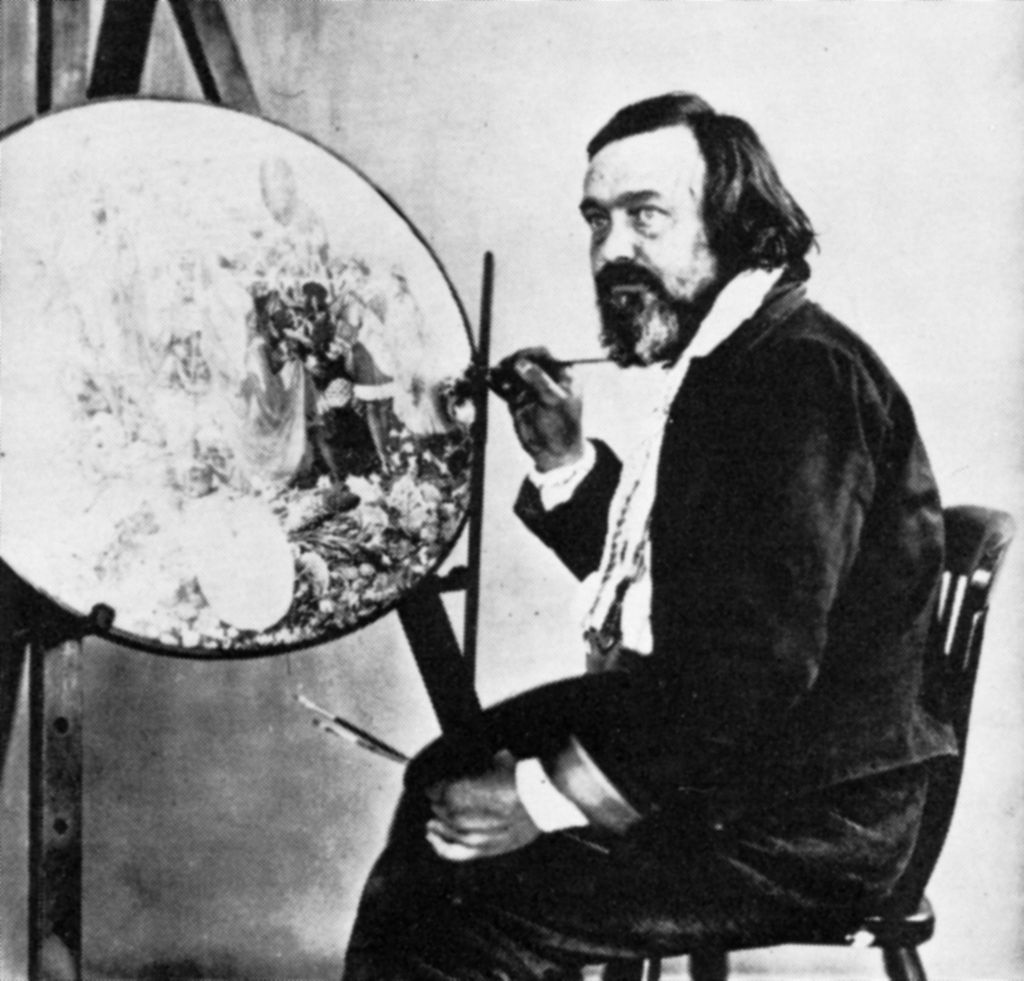The Fairy Feller’s Master-Stroke is a painting by the English artist Richard Dadd
English painter of the Victorian era , noted for his depiction of fairies and other supernatural subjects. Most were completed while he was an inmate of Bedlam and Broadmoor lunatic asylums. (1817–1886), generally considered to be his masterpiece, although Dadd believed it to be unfinished.[1] It was begun in 1855 and worked on until 1864, while Dadd was incarcerated in the criminal lunatic asylum attached to Bethlem Hospital,[a]Known as Bedlam. where he was confined after murdering his father in 1843.[2]
The painting was commissioned by George Henry Haydon, who was head steward of the hospital at the time. Dadd signed the back of the canvas with the inscription: “The Fairy-Feller’s Master-Stroke, Painted for G. H. Haydon Esqre by Rd. Dadd quasi 1855–64”.[3] According to Dadd’s biographer Patricia Allderidge, quasi “may mean that it was set aside during that period or that it took a long time to start”.[4] The end date, 1864, coincides with Dadd’s transfer to the newly built Broadmoor Hospital in Berkshire, the asylum where he spent the remaining 21 years of his life.[5]
Composition
The Fairy Feller, the main focus of the picture, is standing with his back to the viewer, with his axe raised ready to split a large chestnut, to be used in the construction of Queen Mab’s new fairy carriage.[b]Queen Mab is a fairy referred to in William Shakespeare’s play Romeo and Juliet, where “she is the fairies’ midwife”. Later depictions have typically portrayed her as the Queen of the Fairies. He is waiting for the signal to strike from the white-bearded patriarch in the centre of the picture, whose right hand is raised. The rest of the fairy band is looking on in anticipation, anxious to see whether the Fairy Feller will succeed in splitting the nut with a single stroke.[1]
The tiny apothecary brandishing a mortar and pestle in the top right of the picture is a portrait of the artist’s father Robert Dadd,[1] whom Dadd had murdered in 1843 believing him to be the Devil in disguise.[6]
In 1865 Dadd wrote a “long and rambling poem” titled Elimination of a Picture & its subject – called The Feller’s Master Stroke, in which he attempted to explain some of the imagery in The Fairy Feller.[1] The art historian Nicholas Tromans has commented that there is a “curious sense of disavowal” in the poem, “as if saying who is in it is all he can do, their significance being beyond his explanation”.[7]
In 1974 Freddy Mercury, of the rock group Queen, used some quotations from Dadd’s poem in the lyrics to a song that took its title from the painting.[8]
Provenance
The painting passed from Haydon to the collector Alfred Morrison, whose daughter gave it to the war poet Siegfried Sassoon on his marriage to her daughter in 1933.[7]
Sassoon had befriended three brothers while fighting in the trenches of the First World War, grandsons of Richard Dadd’s elder brother. Two of them died during the conflict, and a third, Julian Dadd, committed suicide in 1937.[8] Sassoon decided in 1963 to donate The Fairy Feller’s Master-Stroke to the Tate, “in memory of his friend and fellow officer Julian Dadd, a grandnephew of the artist, and of his [Julian’s] two brothers [Stephen Gabriel and Edmund] who gave their lives in the First World War”.[1]

